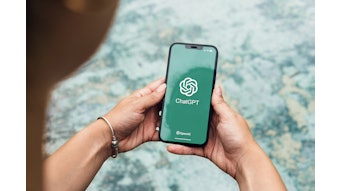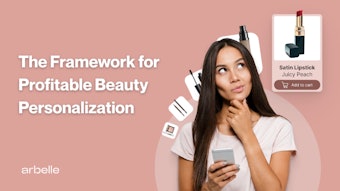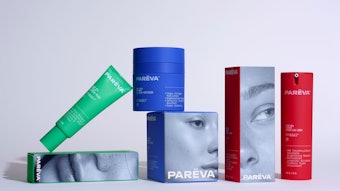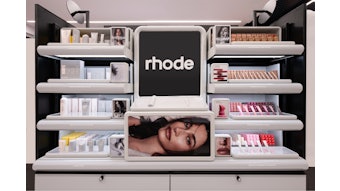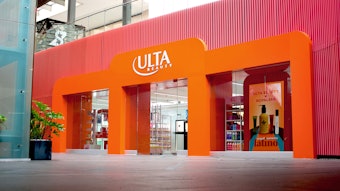- The online beauty market is fragmented with small companies, but the potential for new players to capture significant market share through Internet sales at manageable costs is there.
- In general, female shoppers’ online spend preferences/habits are similar to those in brick-and-mortar shops, and market research demonstrates the propensity for women who search for beauty products online to also make their purchase online.
- For an online-based beauty company, answering customers’ questions and helping consumers learn more about products and their specific beauty concerns is critical.
The beauty industry is finding the Internet a vibrant place to operate. The potential for growing sales and the opportunities to reach ever larger numbers of consumers mean that there are plenty of opportunities for new brands online. In fact, in the current state of the Internet and social media, new players in the beauty industry have a favorable environment and the tools to stand out from and compete with the long-dominating multinational brands, to circumvent hard-to-break-into retail channels and centralize management to control costs. Young labels are now able to grow into robust, global competitors due to the multinationals’ legacy channel strategies, which might gradually become a burden in online markets.
Few major brands have an online presence stronger than their traditional retail channels, and no major global brand aggressively sells online internationally. The majority of beauty products are currently sold through traditional retail channels, with supermarket ranking as the top channel with 46% of total sales revenue generated in the U.S. The traditional distribution channels include:
- Department Stores
- Flagship Stores
- Spas/Salons
- Medical Clinics
- Drugstores
- Supermarkets
- Mass Category Specialty Stores
- Direct Selling
But if online sales are so viable, why do the large global players sell primarily through the above channels?
These channels require long-term investment in capital and human resources on such a large scale that it is rarely an option to redirect or to reallocate a significant portion of resources to promote sales online.
The first seven channels require a physical shelf presence and a tremendous amount of capital to operate. In addition to the cost of real estate, department stores, flagship stores and spas/salons, in particular, also need large, trained, full-time sales forces; the capital required to develop a sustainable direct sales network is no less significant. And because of these large investments, brand owners dependent on these channels lack the incentive to persuade their customers to shop online. Diverting foot traffic away from stores would also lower the return on the investments on the entire infrastructure—inevitably impacting store sales. Because retailers evaluate their tenants (the brands on the shelves) by how much profit each generates per square foot, underperforming brands/products can lose space to competitors. Therefore, the risk of seeing lowered return on the most costly investments might seem to be too great for some established brand owners to try to develop significant online sales.
Though brand owners are faced with rising costs, diminishing bargaining power vis-à-vis retail partners and growing competition from, as one example, private label brands, brand owners cannot negate all the investments and infrastructure established to date—and it is often too risky to grow sales online.
So why is it that multinational brand owners don’t simply start a new brand to grow their online businesses worldwide instead of simply using the Internet as a complementary selling tool for potential customers who are looking for product information or a sales channel for people who might be too busy or too distant to reach a store? A meeting with an executive from a global European beauty company provided a clue about why there hasn’t been any significant efforts in pushing online sales.
The executive visited UNT Skincare in Taipei because the company needed a licensee to take over its mail catalog/Internet-based brand in Taiwan, and he shared a few of the hurdles that the large global brand owners face when considering and building their online business. For one thing, they tend to be very centrally managed companies, and that contradicts the characteristics of e-commerce. E-commerce moves fast by nature, responding quickly to last-minute market changes and is highly adapted to local conditions. In a centrally managed company, everything needs approval centrally. In the case of the visiting executive’s company, the servers were all located at the headquarters, and all changes on the international websites needed to go through the system managers, also located at the headquarters—even when errors caused the site to be out of service.
For those same reasons, customer relationship management campaigns were slow to implement, and developing new services and site functions were unimaginable. Consequently, the only and most important channel for this brand owner’s Internet-based brand, its own website, gradually slowed and became laden with error messages for potential customers.
The Potential and Critical Factors
Many businesses across industries have grown by developing their presence and business through the Internet, but is it possible to grow a beauty brand to a significant scale internationally online? Based on the research UNT Skincare compiled, yes. In general, female shoppers’ online spend preferences and habits are similar to those in brick-and-mortar shops—clothing, accessories and cosmetics are the top shopping categories. And in the virtual stores, they remain the strongest categories. Market research also demonstrates the growth potential and the propensity for women who search for beauty products online to also make their purchases online (going beyond using the Internet as simply a research tool).
With large global brands primarily invested in traditional brick-and-mortar retail channels, the online beauty market is fragmented with small companies. And because there is no dominant player, it is full of potential for new players. Although no small or indie brands have captured a significant market through Internet sales and marketing strategies alone, that may change in the near future—and at manageable costs.
As an example, UNT Skincare develops cosmeceuticals and markets and sells directly to consumers. Based in Taiwan, the company sources everything directly from suppliers and operates its own primary sales channel, www.shopunt.com. Eliminating middle players in the value chain and operating a direct sales model has created a lean cost model for the company. It enables UNT to offer cosmeceuticals at mass market prices in 97 countries. In terms of market opportunity, it is worth noting that the top 20 international beauty companies sell 84% of their cosmeceuticals through brick-and-mortar channels such as clinics, pharmacies and department stores. That has often kept effective skin care a luxury for many consumers.
In this effort, five critical factors in building a successful online beauty brand have been identified:
- Engage the end-user emotionally;
- Gain end-users’ trust;
- Provide quick-to-respond interactive services;
- Integrate a global payment solution;
- Continually draw learning from information collected from advertising campaigns and from the use of the website.
We have learned that companies have to do all of them well in order to succeed in a long-term.
Interactive Services: A Case
Communicating with consumers is vital, and the Internet—notably blogs and social media outlets—is invaluable in spreading the word about a beauty brand and connecting with consumers. UNT’s efforts in building a nail brand is an apt case study.
UNT launched its natural nail lacquer collections in 2009, and by the time this article was written in 2011, sales volume on the collections in Taiwan exceeded that of an established global brand nearly fourfold. To make headway as a entirely new nail brand in Taiwan, UNT built a story around each season collection. For instance, one of the fall/winter collections, “The Grand Destiny of Elie Ledoux,” is built on the story of a young Parisian actress’ rise to stardom. Each color in the collection is labeled with its chapter in the story, and they all, individually and taken as a whole, elicit romantic emotions tied with the colors and their use on nails.
For the launch UNT, invited bloggers, not professional manicurists or stylists, to write and share their personal thoughts on the collection’s story and the emotional impact the story had on them. Thanks to the latest social sharing behavior, consumers then shared their stories with each other and shared how much they liked each color—which further facilitates the purchase decision of all the consumers in that conversation.
In these efforts, it is also important to educate consumers about the brand and products. In this case, UNT made an effort to educate consumers on and draw their attention to differentiators—how these lacquers smelled in relation to other lacquers, durability, shine, etc. The lab test results from SGS (a control and inspection company represented in more than 130 countries by 210 affiliated companies), demonstrating full compliance of the nail lacquer to accepted/permitted standards.
For an online-based beauty company, answering customers’ questions and helping consumers learn more about products (or even more on related and wholistic topics—skin care, for example, beyond treatment via a product) are critical. How fast the consumers receives the answer to a question is critically important to a successful outcome—a purchase. UNT Skincare’s experience shows that if a question is answered within 20 minutes of it being asked, the probability for the purchase is dramatically increased. Therefore, UNT has developed its own live chat customer support system and collaborates with a team of medical professionals to provide customers with free skin consultation services. Through this tool, customers can learn the most up-to-date and science-backed information on skin and cosmetics.
The successful outcomes of efforts such as this demonstrates that e-commerce is half art and half science. Working directly with as many consumers as possible, you can gather detailed information about consumers beyond what website and online advertising metrics tell you—including differences in similarities of consumers across the globe. This scientific approach to data collection allows marketing teams to draw and utilize data from each market to develop new innovations to continually better the business, the brand and the products. The company stays in tune with the market to best serve the market.
Herman Chein is vice chairman of UNT Skincare.
